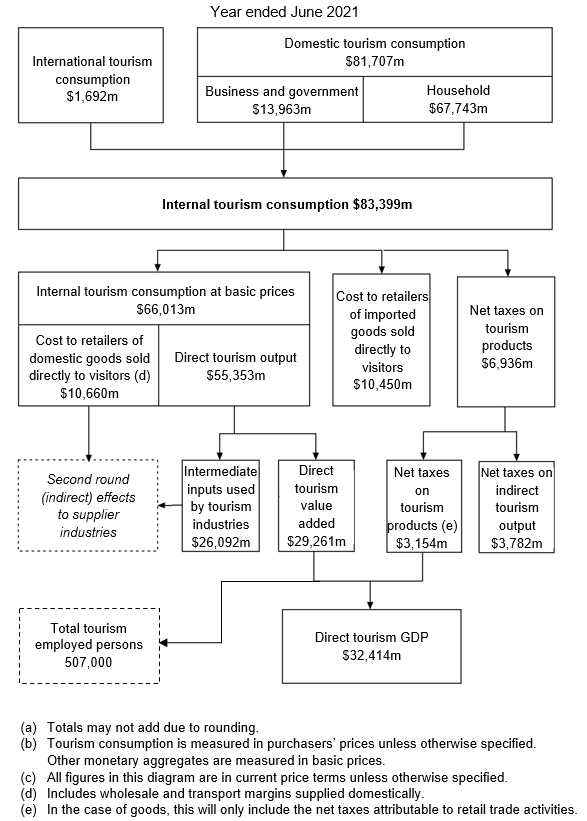Tourism consumption in current price over time
[["2004-05","2005-06","2006-07","2007-08","2008-09","2009-10","2010-11","2011-12","2012-13","2013-14","2014-15","2015-16","2016-17","2017-18","2018-19","2019-20","2020-21"],[[null],[5.7000000000000002],[7],[5.0999999999999996],[1.1000000000000001],[0.20000000000000001],[2.6000000000000001],[5.5999999999999996],[4.9000000000000004],[4.5999999999999996],[4.4000000000000004],[5.4000000000000004],[5.5],[6.7999999999999998],[6.5],[-18.199999999999999],[-33.100000000000001]],[[61690],[65692],[69719],[73138],[73376],[74025],[75502],[80830],[84804],[88822],[91559],[94643],[98850],[105789],[113015],[91842],[81707]],[[19049],[19620],[21525],[22746],[23530],[23091],[24144],[24369],[25603],[26676],[29000],[32471],[35228],[37387],[39468],[32870],[1692]],[[80739],[85313],[91245],[95884],[96905],[97117],[99646],[105199],[110406],[115498],[120559],[127114],[134078],[143176],[152484],[124712],[83399]]]
[]
[{"axis_id":"0","tick_interval":"","axis_min":"","axis_max":"","axis_title":"","precision":-1,"axis_units":"","tooltip_units":"","table_units":"","data_unit_prefix":"","data_unit_suffix":"","reverse_axis":false}][{"value":"0","axis_id":"0","axis_title":"Tourism consumption ($m)","axis_units":"","tooltip_units":"","table_units":"","axis_min":"0","axis_max":"200000","tick_interval":"40000","precision":"-1","data_unit_prefix":"","data_unit_suffix":"","reverse_axis":false},{"value":"1","axis_id":"1","axis_title":"% change","axis_units":"","tooltip_units":"","table_units":"","axis_min":"-40","axis_max":"10","tick_interval":"10","precision":"-1","data_unit_prefix":"","data_unit_suffix":"","reverse_axis":false}]